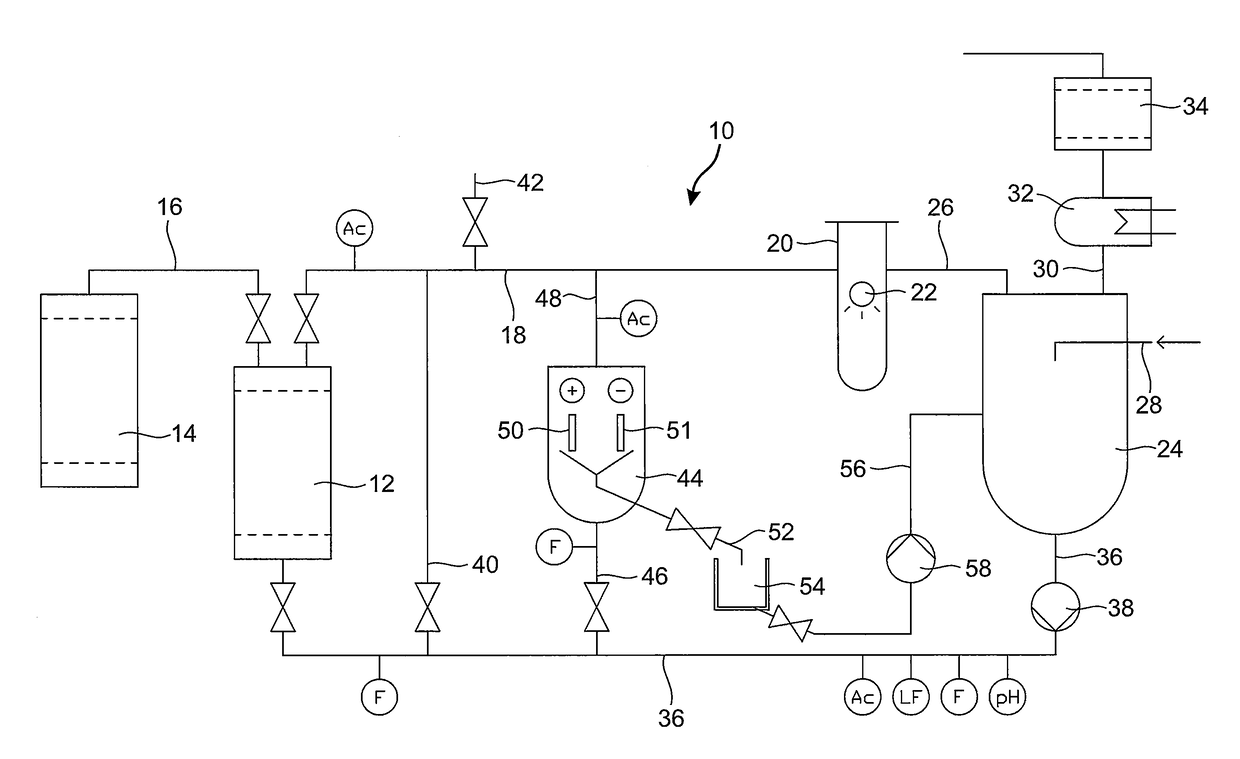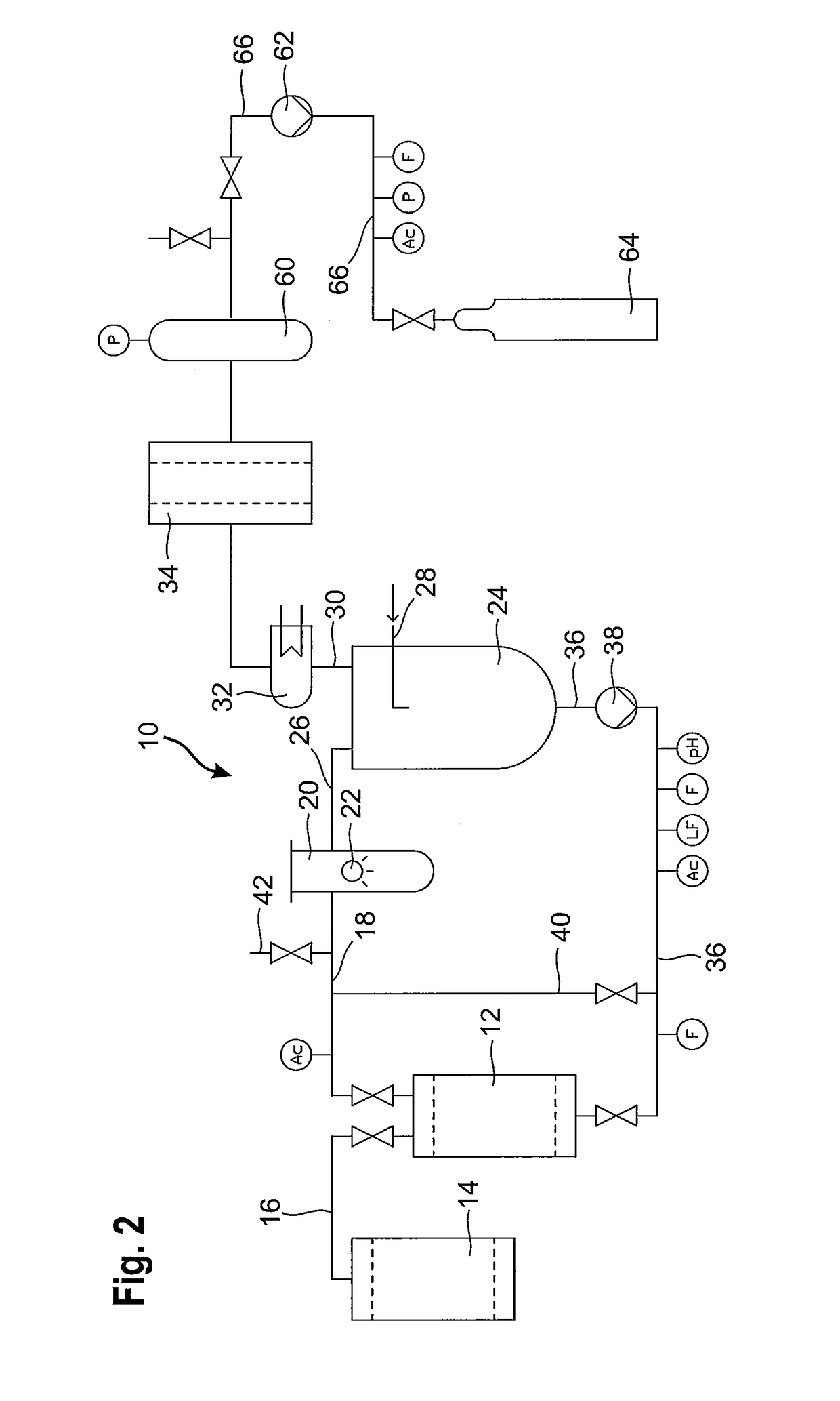Method and apparatus for recovery of radioactive nuclides from spent resin materials
- Summary
- Abstract
- Description
- Claims
- Application Information
AI Technical Summary
Benefits of technology
Problems solved by technology
Method used
Image
Examples
example 1
[0072]Referring to the drawings, FIG. 1 shows an apparatus for the recovery of cobalt-60 from a spent waste resin of a nuclear power plant. The apparatus 10 comprises a regenerating vessel 12 for receiving a slurry of the spent waste resin loaded with at least one radioactive isotope from a nuclear power plant. Preferably, the radioactive isotope comprises Co-60. A predetermined volume of spent waste resin is fed to the regenerating vessel 12 via line 16 from a resin storage container 14 which is stored on-site of the nuclear power plant. The regenerating vessel may be arranged on a mobile system so that the apparatus 10 can be transported to and used at various locations.
[0073]Preferably, the regenerating vessel 12 comprises an ion exchange column for receiving the predetermined volume of the spent waste resin, and more preferably the ion exchange column is shielded with lead against the emission of radioactive radiation.
[0074]Line 18 connects the regenerating vessel 12 to a reacti...
example 2
[0107]FIG. 2 shows a variation of the apparatus 10 shown in FIG. 1, wherein the same reference numerals are used to indicate the same structural parts as in FIG. 1.
[0108]The apparatus schematically shown in FIG. 2 is adapted for the separation of carbon-14 from a spent waste resin. The apparatus 10 comprises a regenerating vessel 12 for receiving a slurry of the spent waste resin from a nuclear power plant. Usually, the C-14 is bound to the waste resin in the form of a carbonate ion. A predetermined volume of the spent waste resin is fed to the regenerating vessel from a resin storage container 14 through transfer line 16.
[0109]The apparatus further comprises reaction chamber 20 equipped with a UV light source 22 connected to the regenerating vessel 12 via line 18.
[0110]The storage vessel 24 is connected to the reaction chamber 20 via line 26.
[0111]Line 36 closes the cycle by connecting the storage vessel 24 to regenerating vessel 12. Line 36 is equipped with pump 38 and means for m...
PUM
| Property | Measurement | Unit |
|---|---|---|
| Electrochemical potential | aaaaa | aaaaa |
| Electrical conductivity | aaaaa | aaaaa |
Abstract
Description
Claims
Application Information
 Login to View More
Login to View More - R&D
- Intellectual Property
- Life Sciences
- Materials
- Tech Scout
- Unparalleled Data Quality
- Higher Quality Content
- 60% Fewer Hallucinations
Browse by: Latest US Patents, China's latest patents, Technical Efficacy Thesaurus, Application Domain, Technology Topic, Popular Technical Reports.
© 2025 PatSnap. All rights reserved.Legal|Privacy policy|Modern Slavery Act Transparency Statement|Sitemap|About US| Contact US: help@patsnap.com



